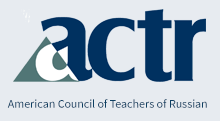Russian Language Journal
Keywords
literature, tradition, text, art, philosophy
Abstract
This is a fine book that makes a strong contribution to the study of Tolstoy and Dostoevsky, while also demonstrating a framework that could be usefully applied to other literature of the period. It convincingly shows that sibling relations in the works of these two authors have been woefully underexamined, and it demonstrates that time and again, key scenes and ideas in their novels are structured around sisters and brothers. Reading from this perspective repeatedly brings new clarity not only to the scenes in question, but also to entire novels, and indeed, to the oeuvres to which they belong. The analysis also effectively brings the roles of women in these narratives into clearer focus and calls attention to patriarchal bias in the critical tradition. It is refreshing to see the looming fathers of War and Peace and the Brothers Karamazov relieved of some measure of their dominance. The “sibling lens,” as Berman calls it, will prove revealing for even the most seasoned scholars of these works and shows what can be gained by examining works with greater attention to their lateral, rather than vertical (i.e., generational or class) relations. The latter perspective is also critical to the problem of universal brotherhood referred to in her title.
Recommended Citation
Lekht, N., & Nickell, W. (2016). Review: Siblings in Tolstoy and Dostoevsky: The Path to Universal Brotherhood. Russian Language Journal, 66(1). https://doi.org/10.70163/0036-0252.1089

